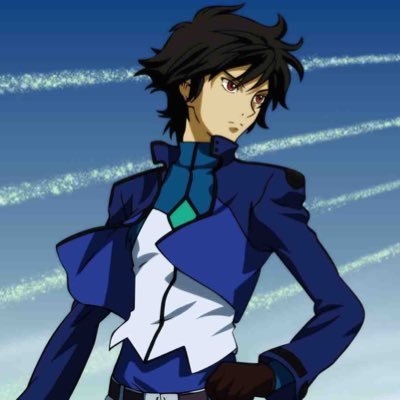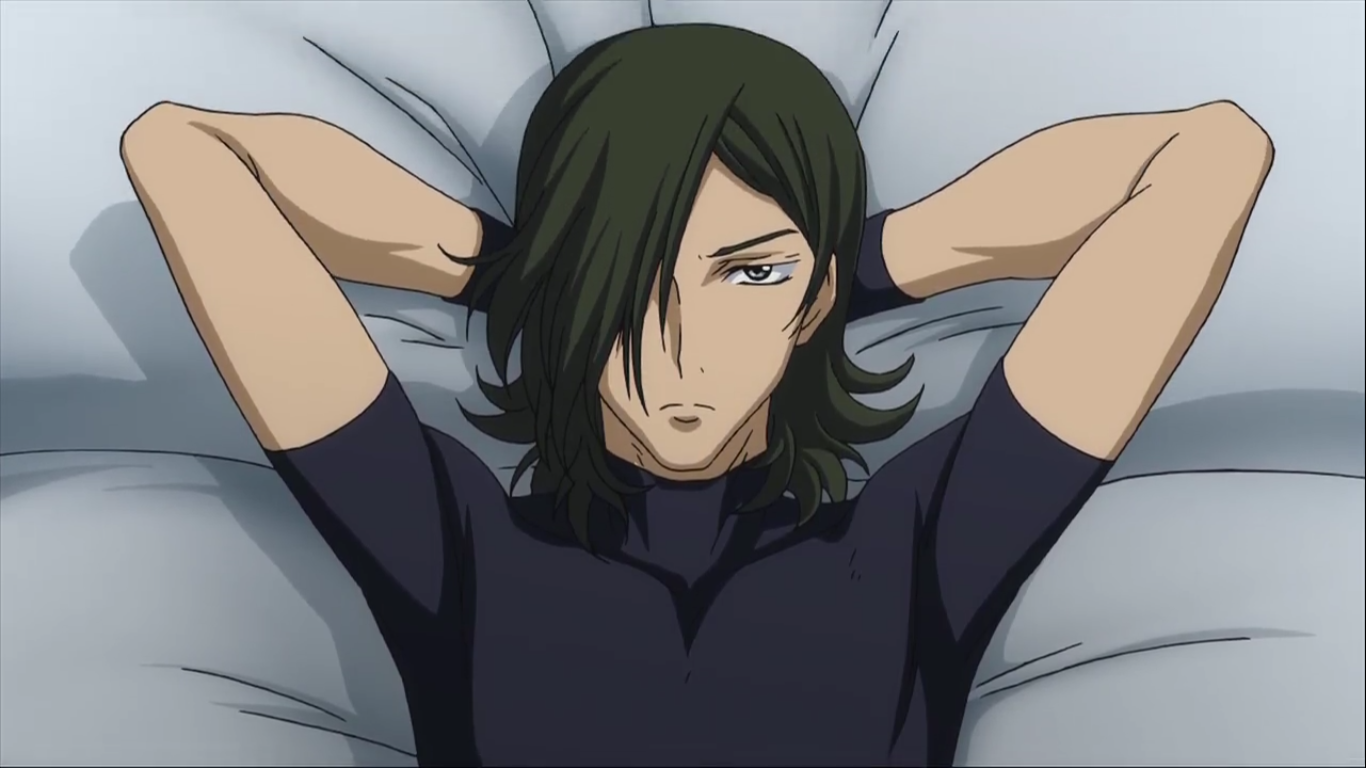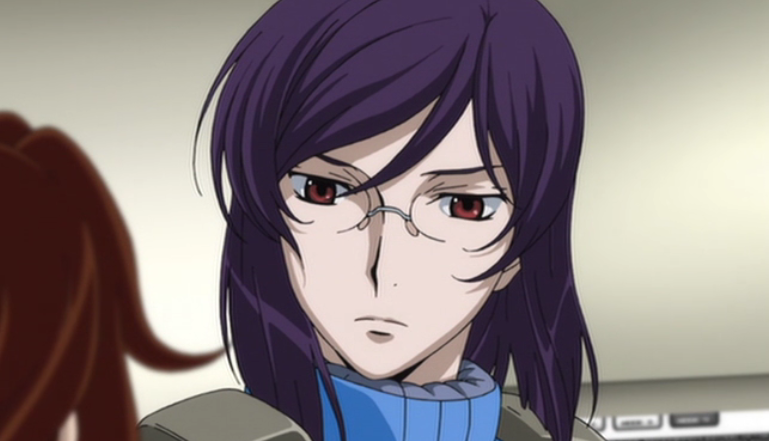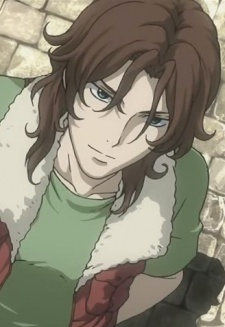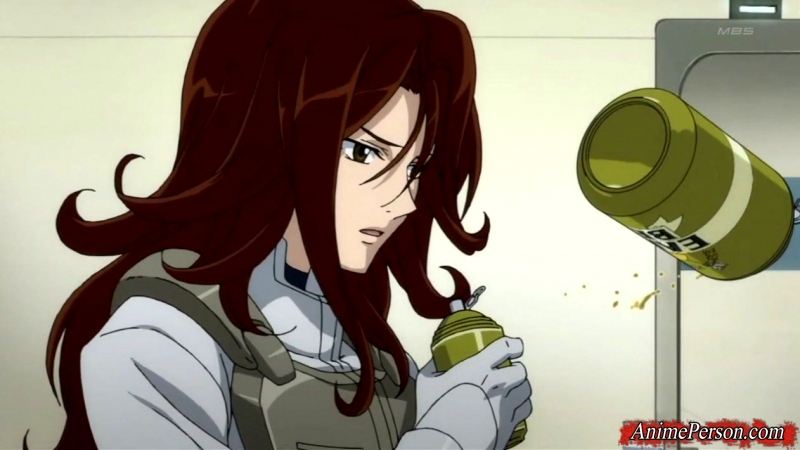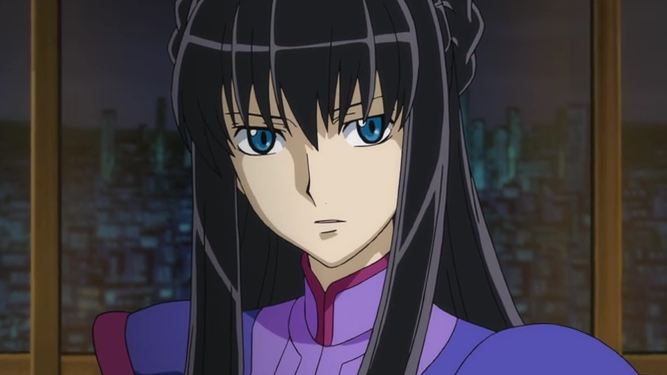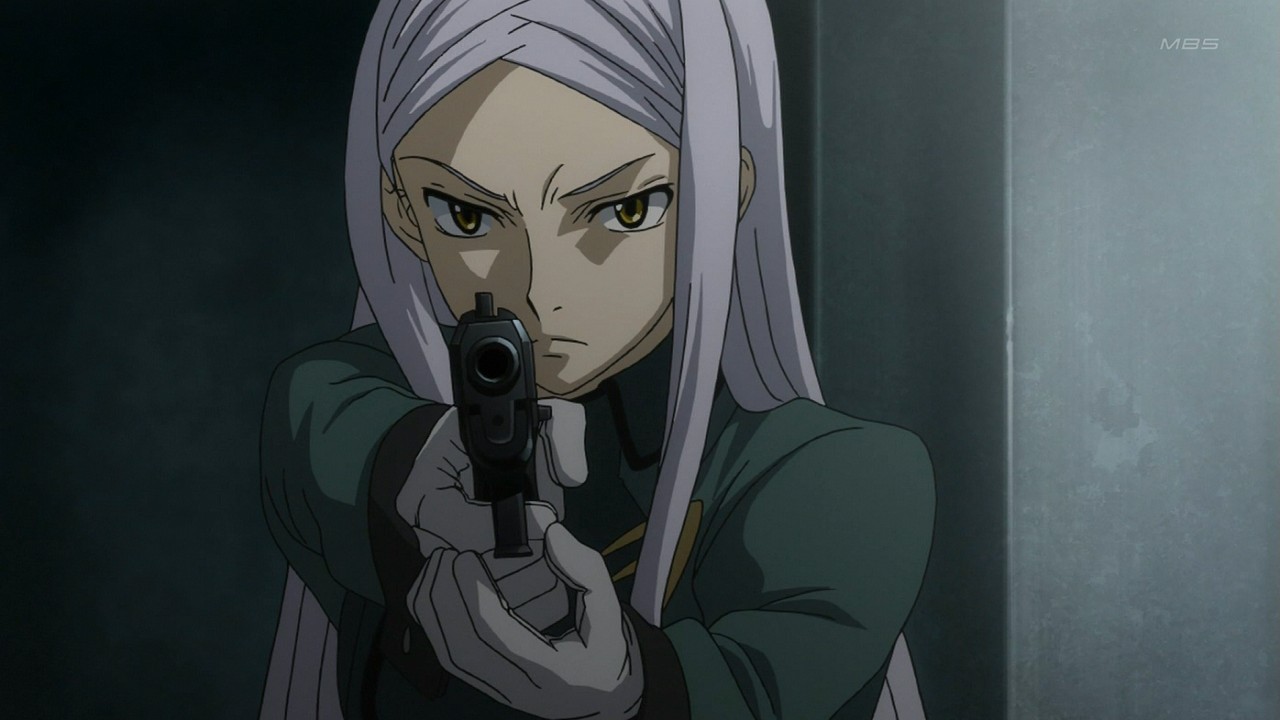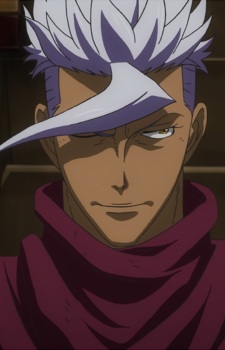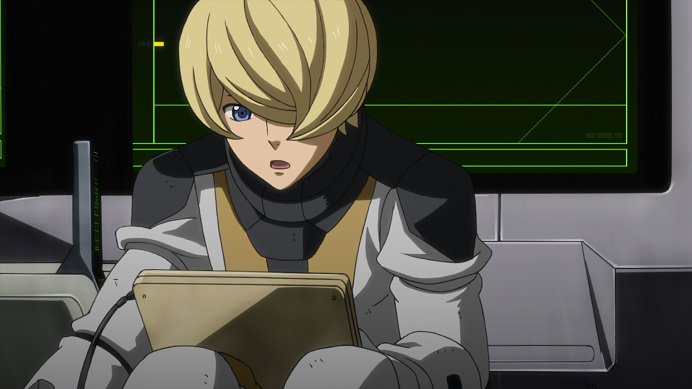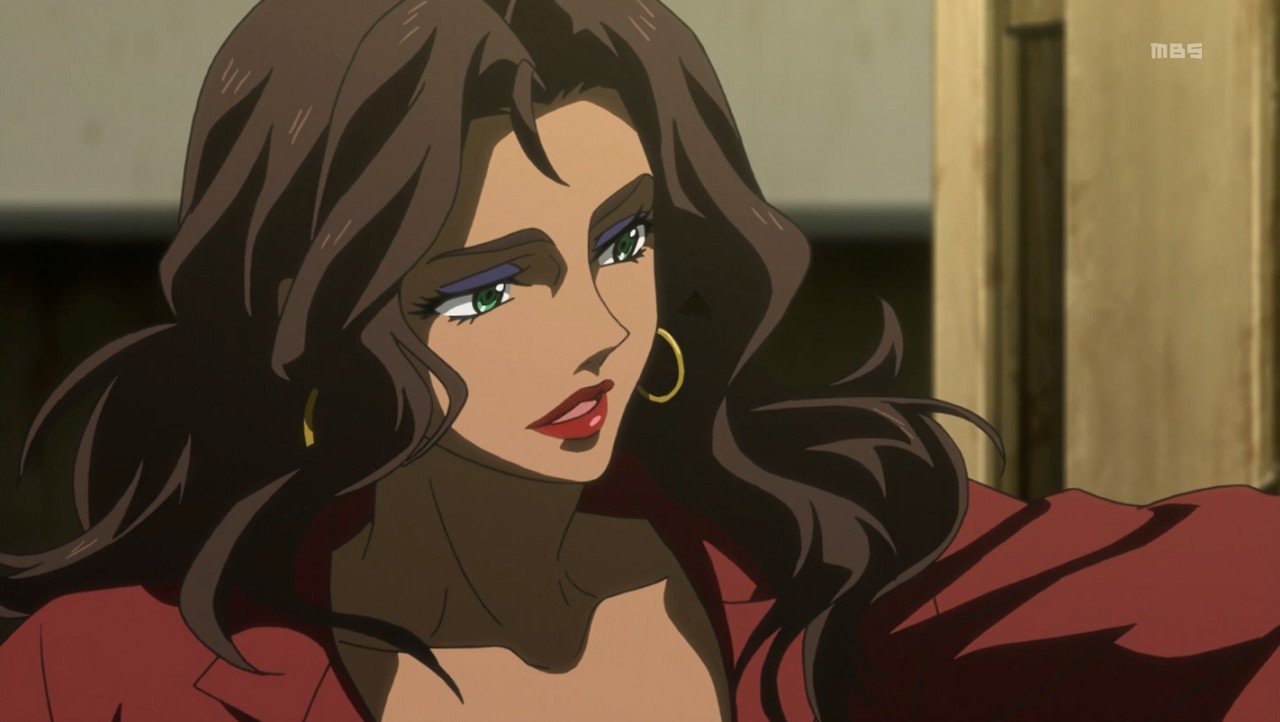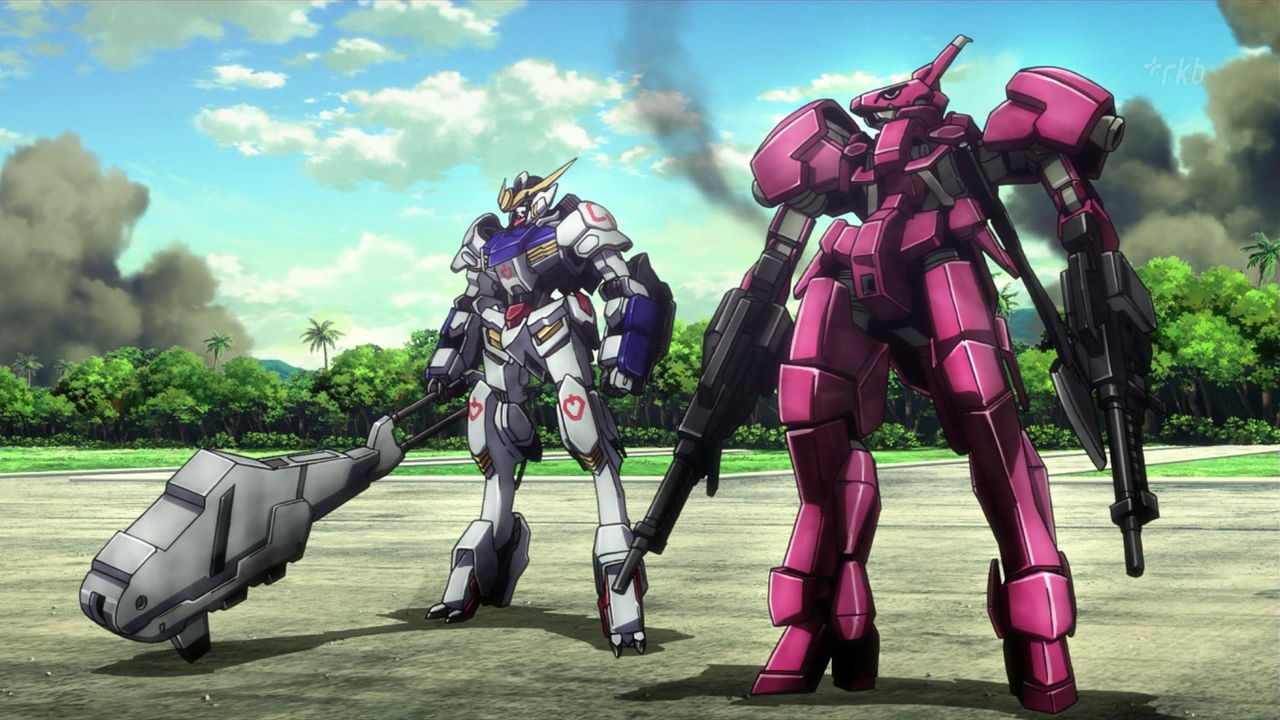Gundam Clash | Mobile Suit Gundam 00 vs. Mobile Suit Gundam: Iron-Blooded Orphans
Gundam has always been a franchise that I knew I'd love, but never took the time to get into. When you see just how many Gundam series there are, it's daunting to even try and figure out where to start. With plenty of box sets being announced at this year's Anime Expo, though, I decided it was time to finally jump in.
I started my adventure into the franchise with Mobile Suit Gundam 00, simply because I searched "Gundam" on Hulu and it was the first result that really caught my eye. Once I'd finished the series, I was eager to talk about my thoughts and move to the next series. Numerous fellow weebs in the Kinda Funny Facebook group (shout out to all the Best Friends) mentioned Iron-Blooded Orphans as an equally-emotional series, if not more so.
That's when I decided to do something that I'm great at: compare things and judge. That's how Gundam Clash was born.
Was it a good idea to start this blog series off with the two highest-rated series in the franchise, according to MyAnimeList? Probably not. Yet here we are. The first-ever Gundam Clash is between 2007's Mobile Suit Gundam 00 and 2015's Mobile Suit Gundam: Iron-Blooded Orphans.
Warning: Spoilers Beyond This Point
Mobile Suit Gundam 00
Set hundreds of years in the future, Mobile Suit Gundam 00 follow Celestial Being, an organization created by the theorist who also thought up the world's orbital elevators and was helping develop a new energy system. Though the technology is more advanced and the countries have become power blocs, the problems the world faces are eerily similar to those we face today: wars in the Middle East, struggles over energy and power, and subversive military expansion. Celestial Being aims to eradicate war by uniting the world against a common enemy. Equipped with Gundams, mobile suits with GN drives who are unmatched by any other technology in the world, the group makes themselves known to the world after hundreds of years of preparation.
This throws all of the world's governments and militaries into disarray as they desperately try to figure out how to handle the new, powerful opponents. Celestial Being's entire existence relies on the world's government and military action, so the series focuses heavily on making every important political progression absolutely clear. Almost every change in the world's political climate makes sense in context, and only comes as a reactionary result of something that happened previously.
There are a few moments, however, that feel a little too coincidental or underdeveloped. Alejandro Corner's decision to find and manipulate Veda at the end of the first season really comes up out of the blue, and it's never really explained why he never thought to control Veda sooner. Soma regaining the memory of her original identity, Marie Parfacy, feels sudden and unexplained. The appearance and inherent skills of Lyle Dylandy reek of convenience. However, all of these points feel minor in the grand scheme of the story.
The only truly bothersome coincidences in the series are the ones that relate to things that Aeolia Schenburg "foresaw" and planned for. The sudden manifestation of the Gundams' Trans-Am systems, which is triggered by Corner shooting Aeolia's catatonic body, is the first time we see this. The creation and reveal of both the 0 Raiser and the GN Archer feel sudden, though their presence makes a little more sense when the four-year gap between the first and second season is taken into account.
Where Gundam 00 really shines, though, is in the emotional connection of its cast. Relationships are given the attention they deserve, letting them develop through time and conflict. Lockon, who acts almost like a guardian for Setsuna at first, is forced to reevaluate his feelings and his stance on revenge once he discovers that Setsuna was a child soldier for the organization that was responsible for his parents and sister's deaths. It's a strain that eventually strengthens their bond and helps both characters grow. Lockon further develops his connections by sacrificing his right eye to save Tieria in a battle, helping force Tieria into understanding the importance of camaraderie and loyalty to something besides your cause.
These struggles and relationships make Lockon's death heartbreaking. Setsuna, who had time to stabilize his relationship with Lockon, arrives just in time to see Lockon die, which leaves him stunned. Tieria, on the other hand, was just getting his first tastes of what friendship was like when, suddenly, that was all ripped away, leaving him confused and emotionally scarred. Not to mention the harrowing sound of Haro repeating "Lockon" over the coms as it pilots the remainder of Dynames back to the ship. The series doesn't move on from the deaths that easily, either. Tieria hallucinates Lockon's presence in the second season, and Ribbons mentions Lockon specifically when criticizing Tieria for how "weak" he's become. Setsuna also hears Lockon telling him to not make the same mistakes he did multiple times throughout the second season. These small moments reiterate their connection to Lockon and just how important he was to both of them.
Even smaller deaths in the series are treated with care. Lichty and Christina, who are relatively underdeveloped characters, are given a touching moment before both of their deaths. The revelation of Lichty's mostly-cybernetic body that then spurs on Christina's realization that she never even got to know him properly or give him a chance is something that every can relate to a little bit. Realizing something that could have been too late is "How to Tug at Heartstrings 101," but the way that it's played out, along with the shocking revelation that Christina is dying as well, is a perfect emotional punch.
The Characters
The relatively small cast in Mobile Suit Gundam 00 allows it to develop its main characters well, giving ample backstories and subsequent development to each of the four Gundam Meisters, as well as a few members of the secondary cast. Gundam 00 also puts female characters in several different prominent positions, from genius-level tacticians like Sumeragi and Kati Mannequin, to super soldiers like Soma Peries and revolutionaries like Shirin. Ethnic diversity, however, is almost nonexistent.
Setsuna F. Seiei is an annoying personality. He's jaded and bitter and, in some sense, extremely lost. Given his backstory, though, all of these traits are understandable, which makes it hard to fault the series. He gets the job done as the show's protagonist, constantly charging forward while also learning and growing as the series goes. His obsession with Gundam can get a bit ridiculous at points, but it's also something that's mocked by his peers, making it feel less campy and more real.
Allelujah, Tieria, Niel Dylandy, and Lyle Dylandy all are different enough to make them unique characters that still work well together. The presence, disappearance, and reappearance of Allelujah's other self, Hallelujah, makes sense within the parameters set by the show, and Hallelujah's given just enough personality himself that it becomes convincingly clear that he's simply a manifestation of a more wild, dangerous part of Allelujah's own personality.
Tieria's growth from a pretentious stick-in-the-mud type to someone who learns about his own emotions and wants to become more human not only creates an emotional and satisfying character arc for him, but also goes on to help explain how Ribbons Almark became more than just an orders-following Veda terminal.
Neil Dylandy, aka the first Lockon Stratos in the series, acts as a sort of catalyst for character growth for both Setsuna and Tieria, making him a vital role even beyond simply filling his role as the Gundam Meister that's there for plain old revenge. His laid-back attitude and quippy nature make him feel more complex when juxtaposed with his serious nature in battle. His unwavering loyalty to those he considers friends is evident when he protects Tieria, in turn blinding himself in one eye. While he never comes across as particularly reckless, his dedication to revenge becomes his ultimate character foil, leading to his death.
The introduction of Lyle Dylandy felt cheap at first. Niel almost never mentions he has a brother, so finding out at the beginning of the second season that Lyle not only exists, but he also looks exactly like Niel and is just as skilled at mecha combat feels a little too coincidental. Fortunately, his personalities and his combat preferences differ enough from Niel's to where it doesn't feel entirely like an "oops we killed a character we didn't really mean to, so now we're trying to fix that" character. Lyle is a free-going playboy that's not nearly as transfixed on avenging his dead family as his brother was and is much more focused on his own personal beliefs and interests. His desire to fight the world regime as it is existed before he joined Celesital Being, and he always believes in Anew, even up to her death.
Mecha Designs
Gundam 00's core Gundam designs are the iconic Gundam look at feel. With all four Gundam Meisters' mechas decked out in the classic white and identifying color combination, the group looks like a cohesive set in combat, while also varying just enough to complement their different styles. Lockon's Dynames' shields are exactly what you'd expect from a long-range sniper setup, while Tieria's Virtue is built like the tank that it is. Their designs are also meticulously thought out to support their numerous weapons. Exia has both his main sword-like weapons and beam sabers and knives, giving him a multitude of options even if his main weapon breaks. The same goes for the other three, who are all equipped with hand-to-hand weapons as well as guns for varying distances.
The knock-off Gundams with pseudo-GN drives get designs that are just different enough to make them unique without taking away the fact that they are, in fact, Gundam-like mechas. The Gundam Thrones, the first mecha revealed with the pseudo-GN drives, have slightly bulkier designs, and the ALAW's GN-X mobile suits are equipped with lance-like weapons that also act as guns.
The series also boasts a wide array of non-Gundam mobile suits. Their styles differ between groups, making the world feel more realistic in how different the weaponry is from area to area. Ground units are bulky and not very agile, making them feel more like giant mecha-looking tanks rather than mobile suits as we imagine them. The Flag mecha that the Union uses, on the other hand, are gangly since they can convert from a plane mode to a mecha mode, similar to Kyrios.
The variety displayed ensures the series' battles never feel stale or repetitive. Different types of mecha give the main cast a different type of enemy tactically, which will play to different characters' strengths and weaknesses.
Mobile Suit Gundam: Iron Blooded Orphans
Mobile Suit Gundam: Iron-Blooded Orphans is a clear representation of anime trends at the time. It's dark and gritty, giving off the same sort of almost-over-the-top edgy vibes as Attack on Titan. Centering around a young group of children who completely reform the hellish security company they worked for into an organization where they can choose their own path, Iron-Blooded Orphans is propelled by a tried and true underdog story. Scrappy kids who got trained as soldiers, mechanics and workers are suddenly thrust into situations beyond their understanding, leaving them to make life-or-death situations mostly based on gut feelings or whatever little information they can understand.
The series does a good job reminding you constantly how young the members of Tekkadan really are. Orga, who essentially stumbled into the role of leader, is one of the oldest of the bunch, despite being only 17. While their lack of understanding about basically anything other than combat is clear (phrases like "I don't really understand" or "we don't really know what all that means" are regularly said by several different Tekkadan members), their inherent tactical knowledge, both on the ground and in space, is something that's both impressive and never really explained. Before becoming Tekkadan, the members were part of Chryse Guard Security, so it makes sense that they would have some tactical training. However, the way they're able to adjust to space combat right from the start feels more than a little convenient.
Iron-Blooded Orphans suffers the most from its poor narrative pacing. The story is packed with events, taking the crew from Mars to Earth and back more than once in the span of 50 episodes. With so much to pack in, it makes sense that some things might not get the attention they necessarily deserve. However, in a series that's based around a group of kids that call themselves a family, many of the show's numerous deaths are underdeveloped, leaving little to no lasting impression before the show moves on to the next thing. Biscuit, whose death clearly traumatized Orga especially, was essentially never mentioned after his death.
In fact, only two of the series' deaths really got the proper emotional setup they deserved. Aston, who'd basically just been a background character before the Earth Branch arc, was given strong connections with other characters so, when it came time for his dying conversation with Takaki, it hit just the right emotional notes. His death also had effects beyond his closest friends. Akihiro recognizes that he should have spent more time with Aston, who'd been friends with Akihiro's younger brother before he died. Even though he was a minor character in the grand scheme of things, Aston's death was one of the most heartwrenching in the series, and that's because it was given the proper preparation and reaction to make it feel heartachingly real.
The same goes for Naze and Amida's deaths. While both died in a frantic escape mission, the monologue leading up to their deaths and then the subsequent shots of the Turbines crew reactions as they're escaping is so powerful that it could make anyone tear up. Though they had more time throughout the series to be built as characters and have their relationships developed, their death was given just as much careful treatment and consideration as Aston's.
Death scenes don't have to take up a lot of time in the story's timeline to be impactful. It's how they're treated in the moment, along with how the remaining characters react, that make them feel real. Iron-Blooded Orphans tends to treat deaths as events that don't create ripples. Characters are hardly mentioned after they're dead, despite the show constantly reminding you that Tekkadan is a family. No one ever said "I really wish Fumitan were here," or "I wonder what Biscuit would have thought of this." It's as if, once the characters have been dead for a few episodes, all memories of them get wiped away.
The Characters
The show certainly suffers from having a slightly too large cast, leaving a majority of the characters feeling underdeveloped due to the series' sheer lack of time. Several of the smaller characters' deaths, like Hush's at the end of the second season, feel underwhelming since they were given very little time to develop beyond their surface-level motivations. However, the series also boasted a cast that was pretty diverse. There are several characters in important roles that have different skin tones, including Chad, Nadi, and Amida. Even Orga has darker skin, though he gives off more of a naturally-tanned vibe, like Kuroko no Basket's Aomine Daiki. Iron-Blooded Orphans even has an obviously gay character whose romance is clearly stated in the series.
When this show succeeds, it really succeeds. The same can be said, however, for when it fails. Mikazuki continues on the Gundam tradition of an impossibly infuriating main character. I guess quirkiness has to be a primary character trait to become the focus of any Gundam series, but Mikazuki's bland, unexplainable personality takes the idea of quirkiness to a whole new level. He gives off very similar vibes as Aldnoah.Zero's Kaizuka Inaho. His desires, aside from following Orga's commands and protecting Tekkadan, basically don't exist. His backstory only consists of when he met Orga and decided to do whatever he said and, even his decision that he wants a baby seems ridiculously out of the blue. It's no wonder the series only really gives Mikazuki significant screen time when he's piloting Barbatos. He's a naturally gifted soldier with almost superhuman abilities and no remorse when it comes to killing, but his personality is flat on its own.
Orga, the other half of the show's leading duo, is a hot-headed leader with a listening problem. In the whole series, he's the one who comes off the most realistic for his age. In his upper teens, he's a guy that does his best, despite being relatively naive and unprepared for basically anything that comes Tekkadan's way. His emotions get the better of him, and he becomes susceptible to the idea of power and wealth easily, something that pretty much any teenager in his position would no doubt do. He gets confused and frustrated easily. He's a typical guy that's given probably too much responsibility and power too early in his life. The show never really gives Orga chances to show any other sides to himself, be them goofy or cute, which stints his character depth a little.
And, of course, what would a Gundam show be without a female lead that's somewhat a love interest but also an idealist and public-facing personification of hope? Kudelia struggles with her inability to be much help in combat situations at the beginning of the series, but she soon finds places where she's a huge asset. Her role diminishes pretty drastically in the second season, moving her out of "main cast" status. However, she's probably the character that sees the most development and growth throughout the series, making her entire character arc from beginning to end the most substantial and gratifying in the end.
Mecha Designs
Both the Gundam and non-Gundam mecha in Iron-Blooded Orphans are either hit or miss. Barbatos, Mikazuki's Gundam, is the typical blue-and-white color scheme and boasts a rough, badass design with lots of edges. It's a gritty, angry design that fits the show's overall aesthetic perfectly. Gusion, the second Gundam picked up by Tekkadan, develops through its various rebuilds and upgrades from an odd, spherical mess to a sleeker, more modern design. Flauros, also known as Ryusei-Go IV, is the final Gundam to join Tekkadan's lineup. Shino's signature paint job helps make it stand out next to the other mecha and it's well built for what's probably the closest thing in the show to a tank mecha.
The non-Gundam mobile suits in the series, however, all blend together. They all feature Gundam-like designs, making their only differentiator their colors. There are no mobile suits that are bulkier or different shape. From the Graze machines that Gjallarhorn soldiers pilot to the various machines the Turbines girls use, they all have generally the same look and feel, which in turn limits the possibilities in battle choreography.
The Clash
Comparing these shows can be difficult. One is a political commentary mixed with plenty of space combat, while the other is an underdog story about a group of children trying to survive in a harsh world. Gundam 00 relies just as much on engaging and variable combat sequences as it does political intrigue, while Iron-Blooded Orphans relies more on naive children making difficult decisions and quick spurts of semi-engaging battles.
Both series boast impressive world building. While the history isn't explained very well in Iron-Blooded Orphans, that doesn't hurt the story's plot. Gundam 00, on the other hand, gives a fairly clear breakdown of the world's history over the past few hundreds of years, but it does this so well because it's crucial in explaining Celestial Being's creation and mission.
Ultimately, deciding which one is better comes down to personal preference. If shows that are rooted in politics aren't your thing and the choreography of a fight sequence doesn't matter to you so long as something is destroying something else, then Iron-Blooded Orphans is probably more your style. If an intricately-built world history with always-developing character relationships and impressive fight sequences seem more up your alley, then Gundam 00 may be the better yet.
Either way, I will always recommend both series to anyone who asks. They're the two highest-rated Gundam series on MyAnimeList for a reason.
Final Verdict
- World Building: Tie
- Main Cast: Gundam 00
- Secondary/Background Cast: Iron-Blooded Orphans
- Mecha Design: Gundam 00
- Battle Choreography: Gundam 00
- Overall Plot: Iron-Blooded Orphans
Winner: Mobile Suit Gundam 00
Who do you think deserved to win? Let me know in the comments. You can also follow me on Twitter or share the love on Facebook. If you want more content like this more frequently, let me know be becoming a patron over on Patreon.
